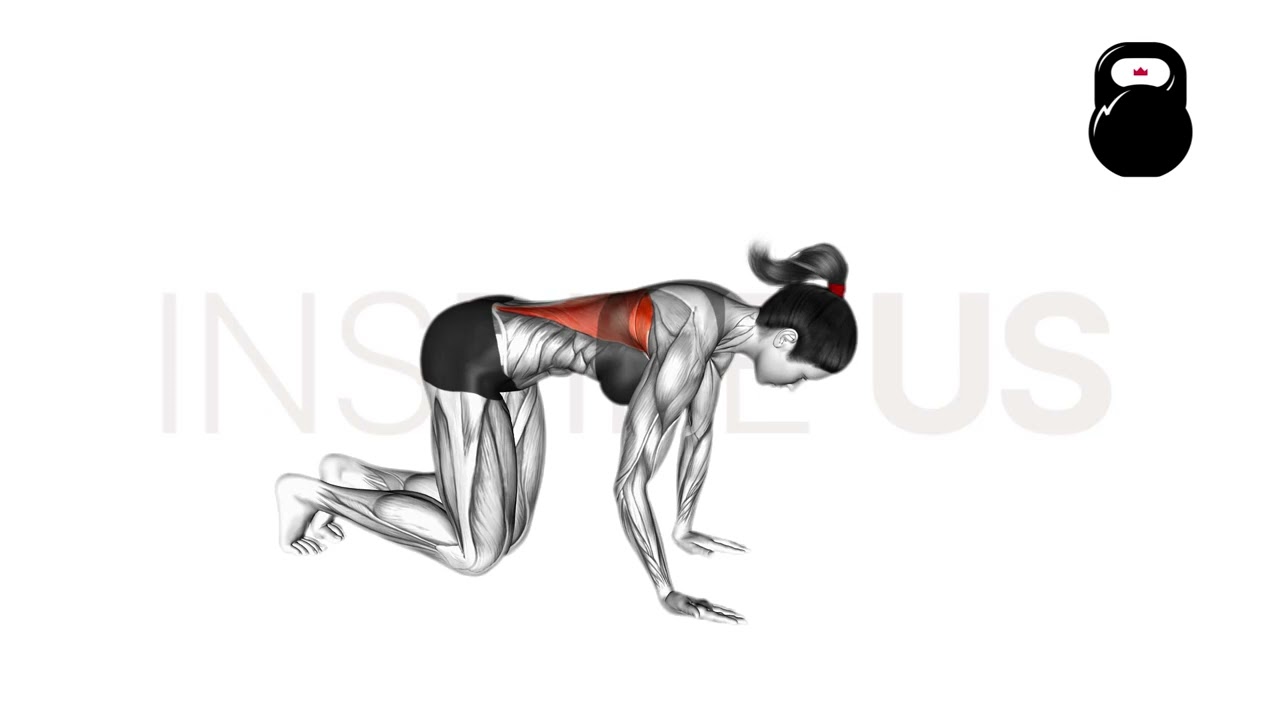Kneeling Lat Stretch: Benefits, Muscles Worked, and More
Also known as the kneeling thoracic extension - kneeling lat stretches are a form of static stretch meant to target the muscles of the back in a safe and highly effective manner.
Because of how pervasive poor back muscle mobility can be, including at least one lat-focused stretch into your daily mobility routine will help correct issues related to posture, poor athletic performance and even upper body instability.
In this article, we will discuss not only how to perform the kneeling lat stretch, but also the benefits it offers and a few common mistakes you should avoid.
What is the Kneeling Lat Stretch?
The kneeling lat stretch is a multi-joint static stretch meant to target the muscles of the back - especially the latissimus dorsi muscles.
In practice, two variations of the kneeling lat stretch exist; the first being the standard version performed with the exerciser simply kneeling on the floor, and the other having them drape their torso atop a bench, knees on the floor.
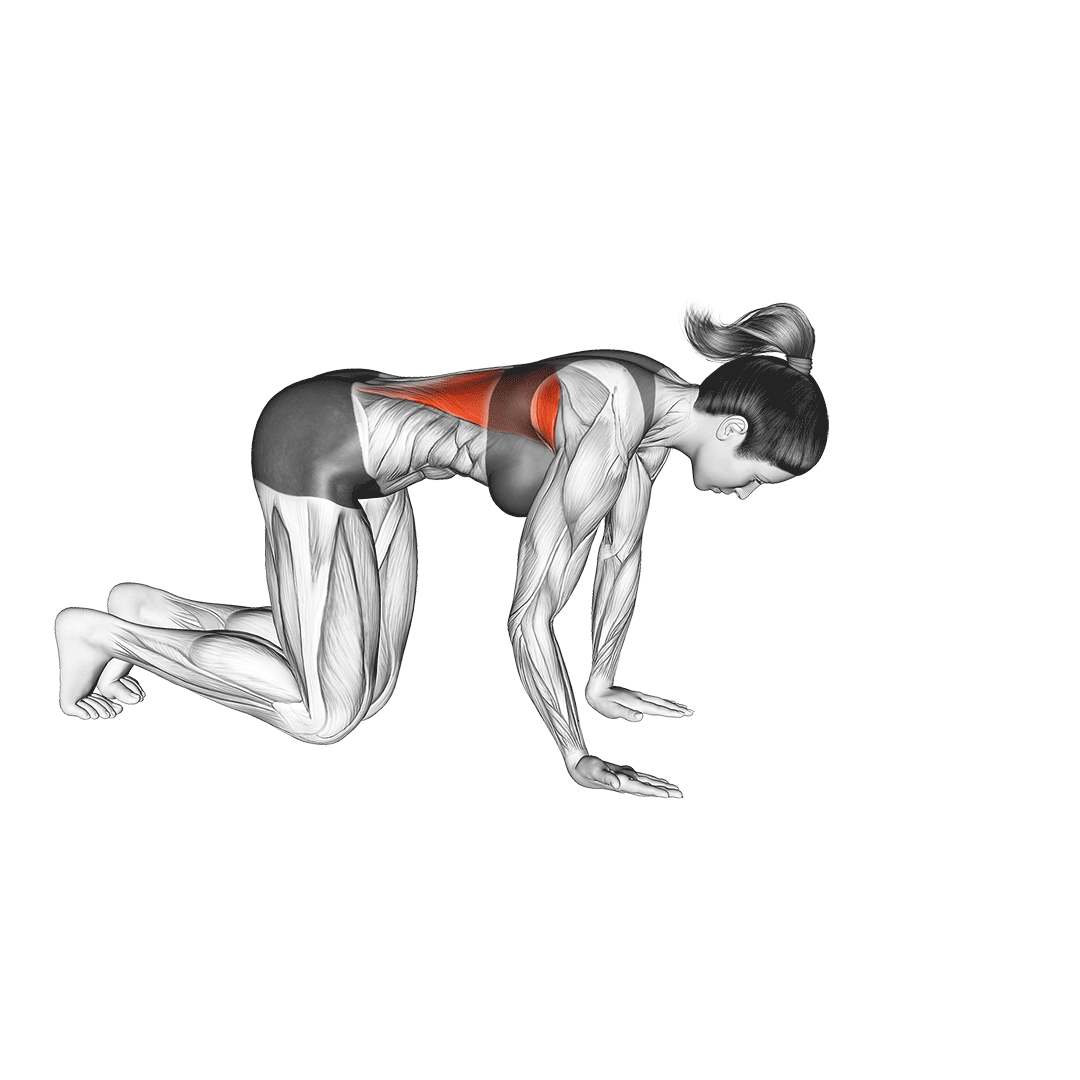
The bench variation of the kneeling lat stretch is considerably more intense on the lats, but is not a necessity for individuals that prefer the standard variation.
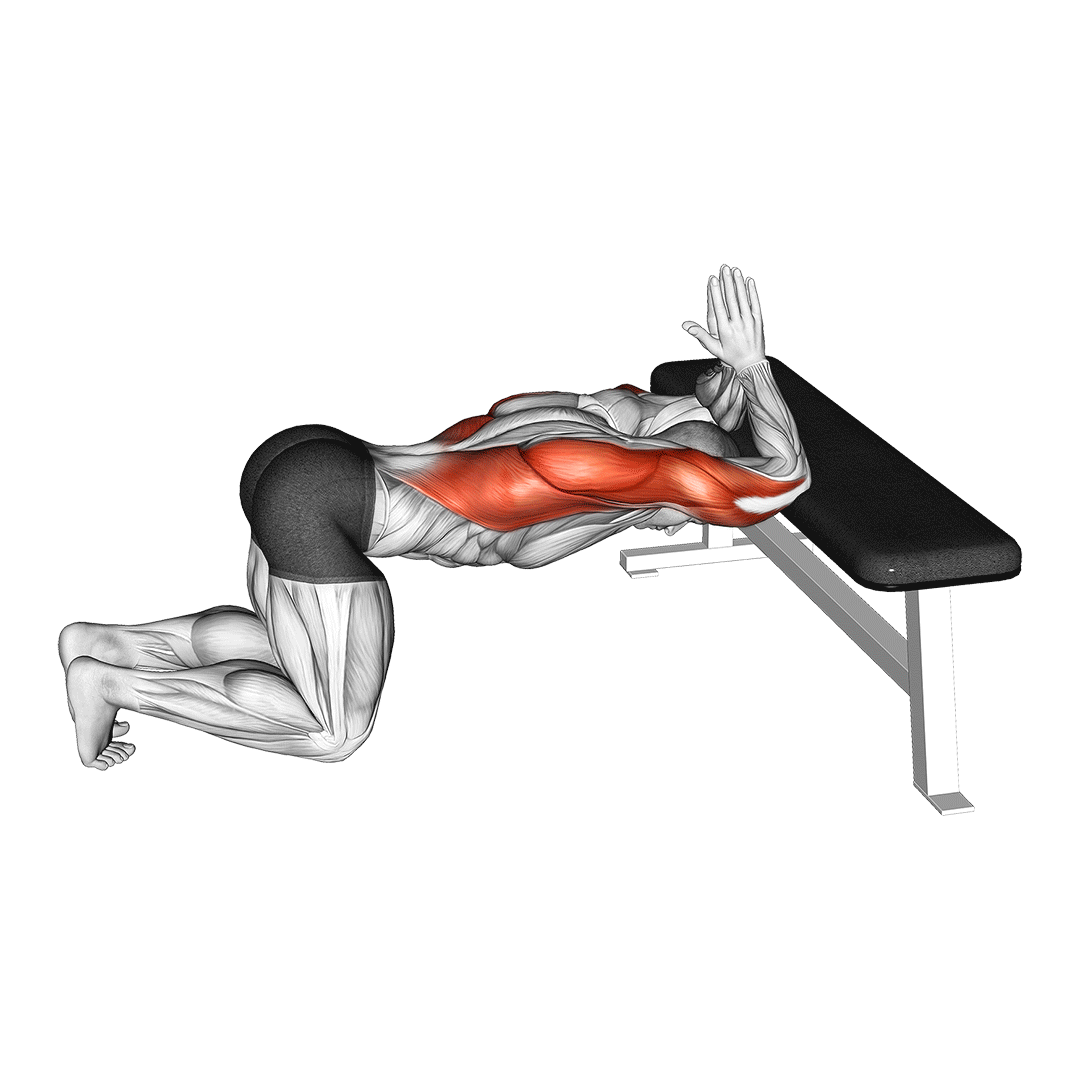
Kneeling lat stretches are employed by athletes and similarly mobility-focused exercisers for the purposes of releasing tension and improving mobility in the back.
Because the kneeling lat stretch already requires some level of pre-established mobility to be performed correctly, it is more appropriate for individuals who can already perform entry-level stretches.
How to Do a Kneeling Lat Stretch
To perform a kneeling lat stretch, the exerciser will first kneel down on the floor with their arms extended forwards.
In this stance, the exerciser will bend at the hips and lower their torso until it is parallel to the floor, arms sliding forwards as they remain extended over the ground.
Now positioned correctly, the exerciser continues by winging their shoulder blades downwards, protracting the scapula. Hold for up to 30 seconds.
If performing the stretch with the use of a bench, simply drape the arms over the bench and lower the body between the elbows and the hips, repeating the same scapular protraction.
What Muscles and Joints are Targeted by the Kneeling Lat Stretch?
In terms of muscles stretched, the kneeling lat stretch prioritizes the entirety of the latissimus dorsi, but will also stretch the infraspinatus, the teres major and minor, as well as the posterior deltoid heads as well.

For non-muscular structures, the thoracic section of the spine will be partially decompressed and stretched in this pose. This can be intensified by depressing the torso further towards the ground with the use of a bench.
In addition, depending on the position of the arms and torso, the shoulder joint will also be partially stretched.
Benefits of Doing the Kneeling Lat Stretch
Apart from general lat flexibility, the kneeling lat stretch also offers the following benefits.
Improves Back Flexibility and Stability
The kneeling lat stretch is not just for the lats - it also targets nearly every muscle found in the mid-back, as well as the underlying section of the spine that supports these muscles.
Poor flexibility of the mid-back and poor mobility of the spine and scapula are both a result of a sedentary lifestyle, especially for office workers or others who remain seated in a hunched position for extended periods.
Inflexibility in this area of the body leads to poor posture and can subsequently also affect other sections of the body, such as causing forward head posture and muscular imbalances of the deltoids or trapezius.
Fortunately, the kneeling lat stretch targets all these individual structures in a single static exercise, saving the performer time and energy.
Reinforces Scapular Retraction/Protraction
Apart from potentiating the muscles responsible for it, the kneeling lat stretch will also stretch the tendons responsible for connecting the scapula to the humerus and clavicles, indirectly improving scapular retraction and protraction.
Extends the Thoracic Spine
In actuality, the kneeling lat stretch is a kneeling thoracic extension modified with the addition of scapular protraction. Much the same benefits and characteristics of its predecessor stretch are still present in the kneeling lat stretch - the most important of which is extension of the thoracic spine.
Extension in this part of the spinal column is frequently seen in exercises like the back squat, deadlift or even non-training related activities, like basketball and simply reaching the arms overhead.
Stretching the spine in this position allows the exerciser to build its capacity to do so, as well as strengthen the ligaments that hold the entire spinal column together.
Excellent for Cooling Off After a Back Workout
Because the kneeling lat stretch is a static stretch, many athletes prefer to use it during a cool-off period after their training session. This aids in releasing tension and pressure throughout the back, as well as helps in speeding recovery by improving blood flow to the muscles therein.
Can be Modified to Suit Performer’s Experience
As mentioned previously, the kneeling lat stretch may be made more intense with the addition of an exercise bench or similar platform. This allows the performer to elevate their hands
Common Kneeling Lat Stretch Mistakes
In order to get the most out of the kneeling lat stretch, avoid the following highly common mistakes.
Failing to Tuck the Chin
Much like the mid-back, the neck and head are also connected to the thoracic section of the spine (through the cervical section).
This means that a greater extension and release effect can be achieved by tucking the chin into the neck while performing the kneeling lat stretch - further stretching the back and spine.
Curving the Back
In order to properly stretch the lats and other nearby muscles, the back should be extended towards the floor. Rounding at the lower or upper back will both negate much of the benefit seen with the kneeling lat stretch as well as greatly increase the risk of injury.
A good cue to follow so as to avoid this mistake is to push the chest outwards while keeping the elbows pressed into the floor or bench. This will prevent the back from curving while still allowing for the scapula to protract throughout the stretch.
Failing to Protract the Scapula
In order to truly stretch the latissimus dorsi out, the scapula should be protracted once the exerciser’s torso is horizontal.
In addition to targeting other muscles in the back, this will ensure that the entire width of the lats are stretched to their fullest degree.
Those with trouble consciously protracting their scapula can imagine drawing the base of their shoulder blades apart while squeezing the shoulders downwards.
Extending the Hips Forwards
Throughout the kneeling lat stretch, the pelvis should remain parallel with (or behind) the thighs as the knees remain on the ground.
Extending the pelvis forwards will greatly reduce how well the back is stretched and compromise the safety of the lower back.
When performing a kneeling lat stretch, strive to keep the lower back neutral and the glutes pointed outwards as the core remains lightly activated. This will protect the spine, ensure a full stretch is achieved and increase the movement’s range of motion.
Alternatives to the Kneeling Lat Stretch
If the kneeling lat stretch isn’t stretching your back the right way - or if you can’t be in a kneeling position - try the following alternatives out.
Standing Lat Stretch
The standing lat stretch is a less intense one-sided alternative to the kneeling lat stretch.
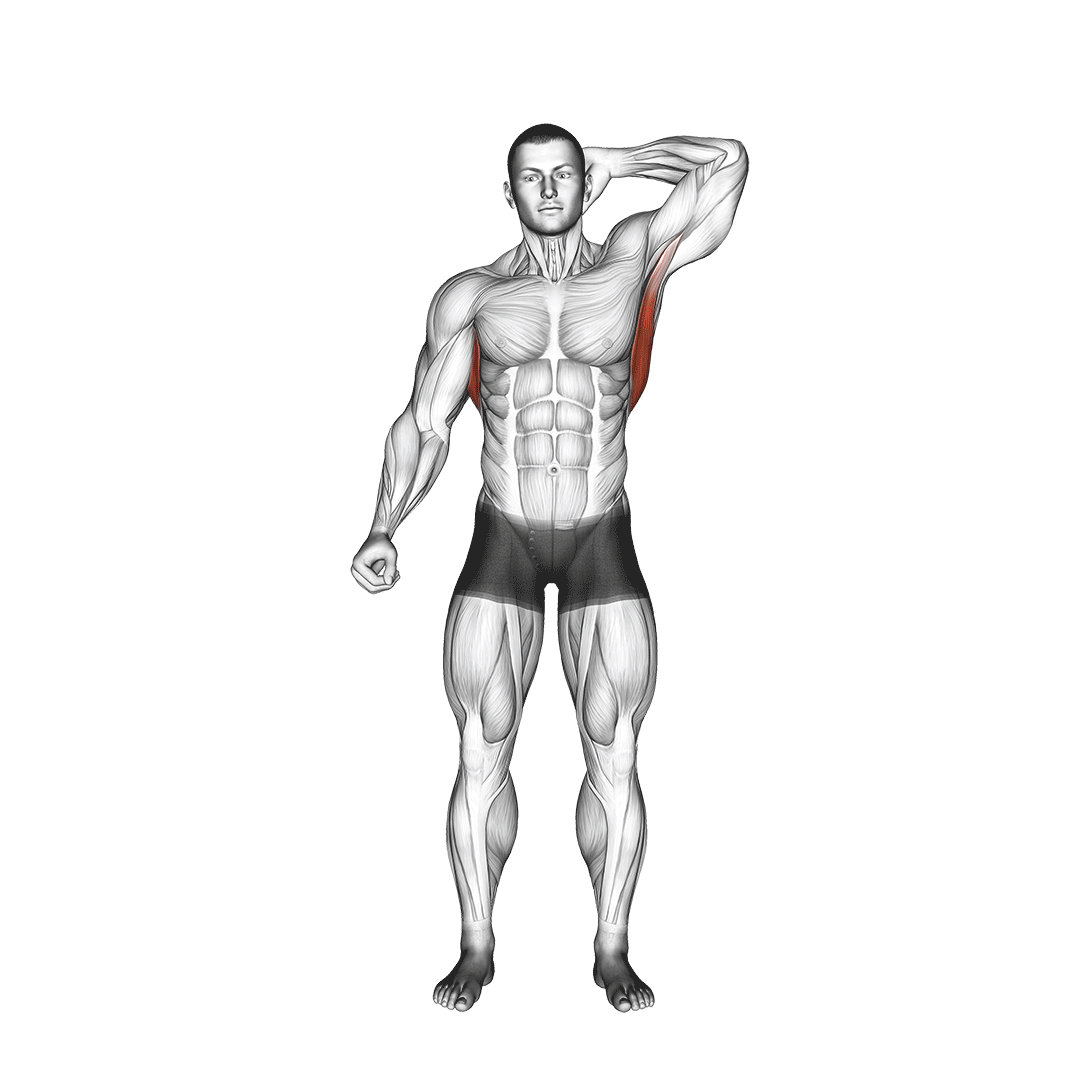
When performed, the exerciser will raise both arms overhead and bend the torso to the side at the waist, stretching the lats, deltoids and other mid-back muscles on one side of the body.
Because it is performed in a standing position, it is considerably more convenient and can be performed in situations where kneeling on the ground is not feasible.
Wall Lat Stretch
The wall lat stretch involves the exerciser raising one arm over their head and pressing it against a wall as the torso leans forwards. This creates a more unilateral movement pattern and entirely eliminates the need for movement of the lower back.
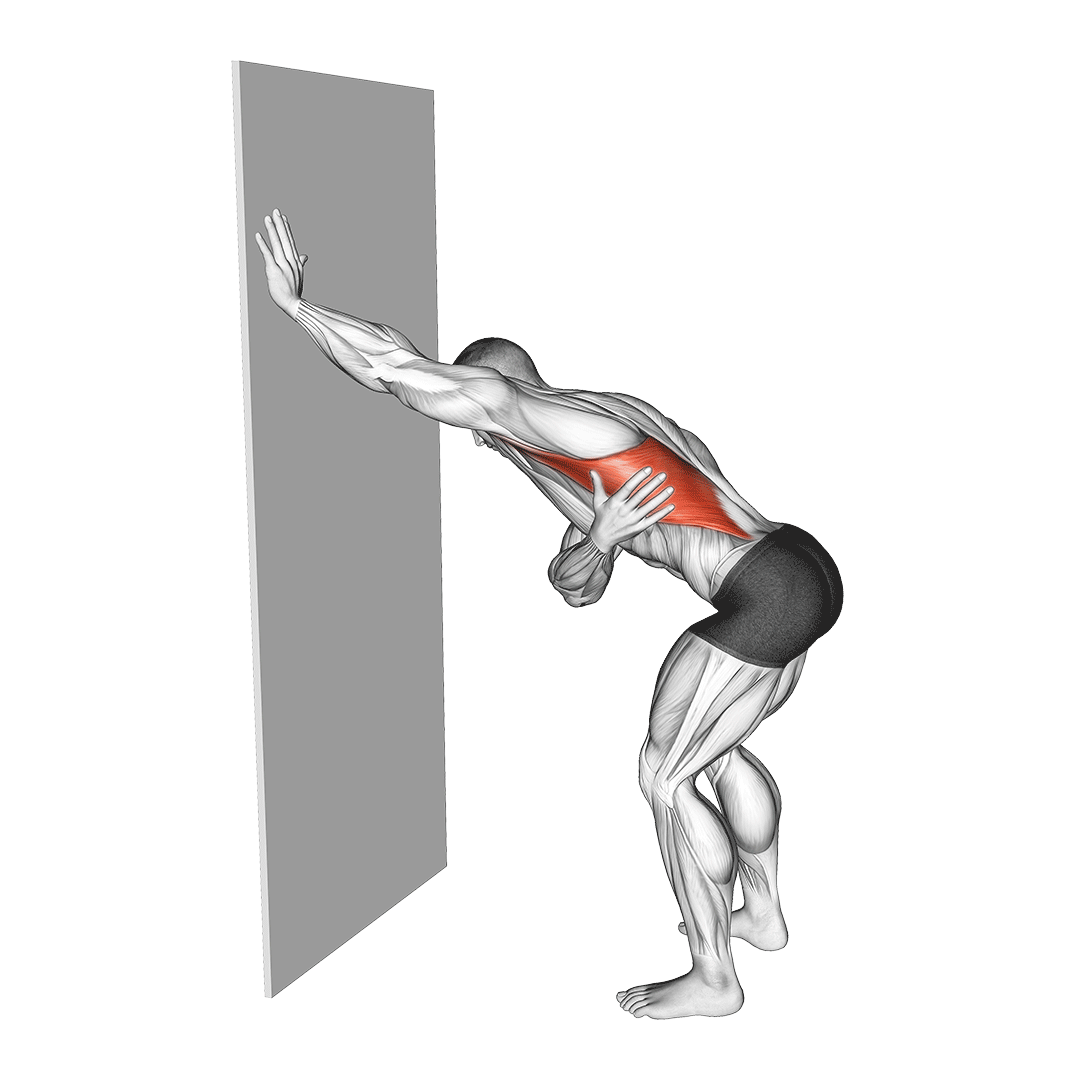
The wall lat stretch is the ideal alternative for those that wish to truly minimize the joint impact of their mobility routine, or those that find themselves pressed for time.
Hanging Lat Stretch
The hanging lat stretch is an advanced flexibility exercise involving the performer hanging from a pull-up bar with one hand. This will effectively maximize the length of the lats, remaining mid-back muscles and the shoulder joint as well.
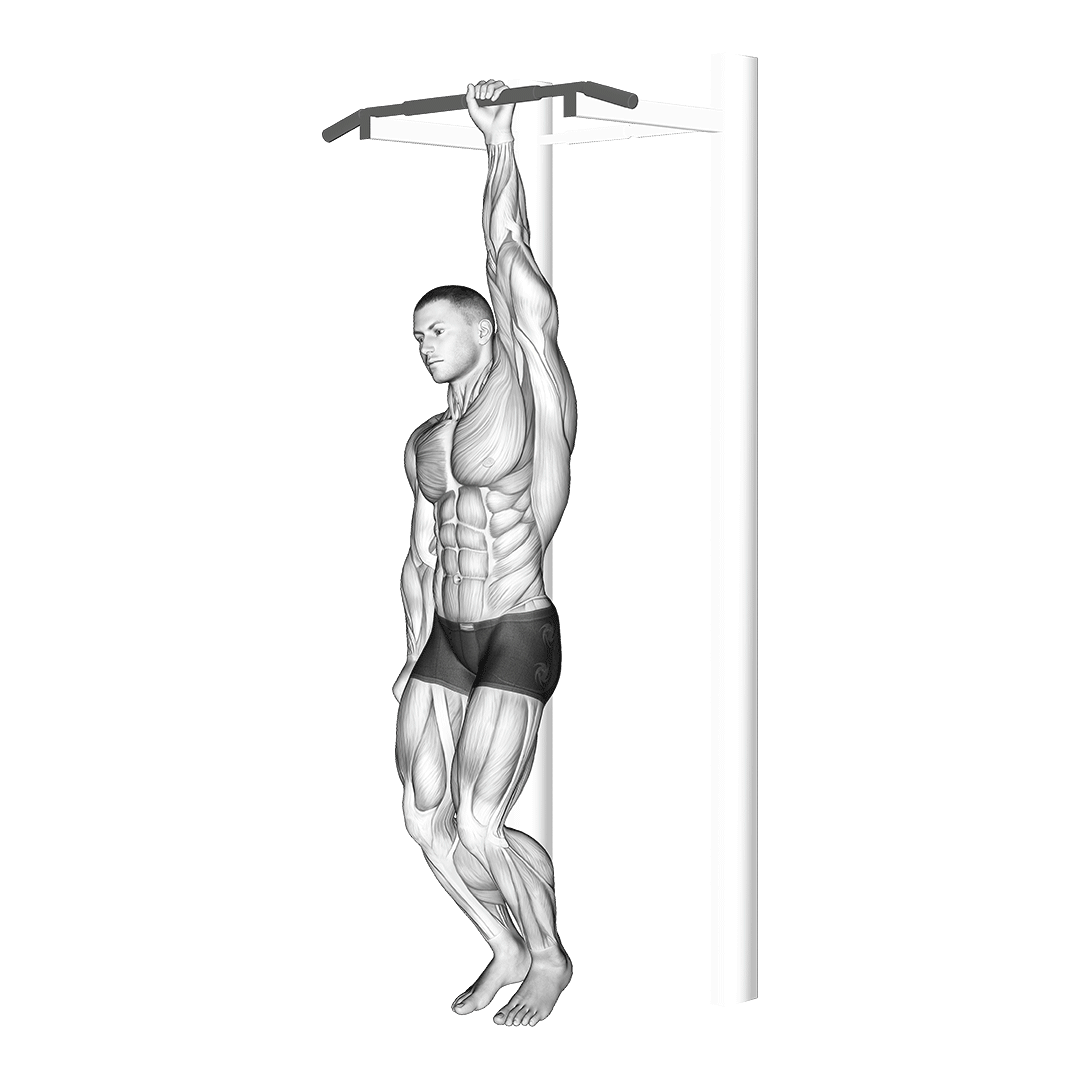
Use the hanging lat stretch as a substitute if you can safely suspend yourself in this manner and find the kneeling lat stretch to be insufficient.
Frequently Asked Questions (FAQ)
Do Tight Lats Cause Shoulder Pain?
In certain cases - yes. Poor latissimus dorsi function can lead to shoulder and shoulder blade pain.
However, these symptoms can also be caused by a variety of different problems as well. If the pain is severe or if your shoulder mobility is severely hampered, it is best to speak to a medical professional.
What Actions Do the Lats Do?
The lats are responsible for adducting, internally rotating and extending the shoulders. This is achieved through movement of the scapula in a variety of different directions - of which influences the shoulder joint itself.
Does the Kneeling Lat Stretch Help With Shoulder Pain?
If your shoulder pain is indeed a result of tight lats, then yes. It is likely that the kneeling lat stretch will help alleviate symptoms - as will other stretches meant to target the lats.
Closing Words
Although the kneeling lat stretch is not the most back-friendly or convenient lat stretch out there, it is a veritable inclusion into any intensive stretching routine.
For the best results, pair the kneeling lat stretch with a trapezius stretch and lower back stretch. This will effectively target the entirety of your back.
References
1. Yoo WG. Effect of thoracic stretching, thoracic extension exercise and exercises for cervical and scapular posture on thoracic kyphosis angle and upper thoracic pain. J Phys Ther Sci. 2013 Nov;25(11):1509-10. doi: 10.1589/jpts.25.1509. Epub 2013 Dec 11. PMID: 24396221; PMCID: PMC3881488.
2. N.A. The Group Fitness Instructor's Handbook: Creative and Practical Solutions for Designing Great Classes. United States: IDEA Health & Fitness, 2006. ISBN: 9781887781077, 1887781072

